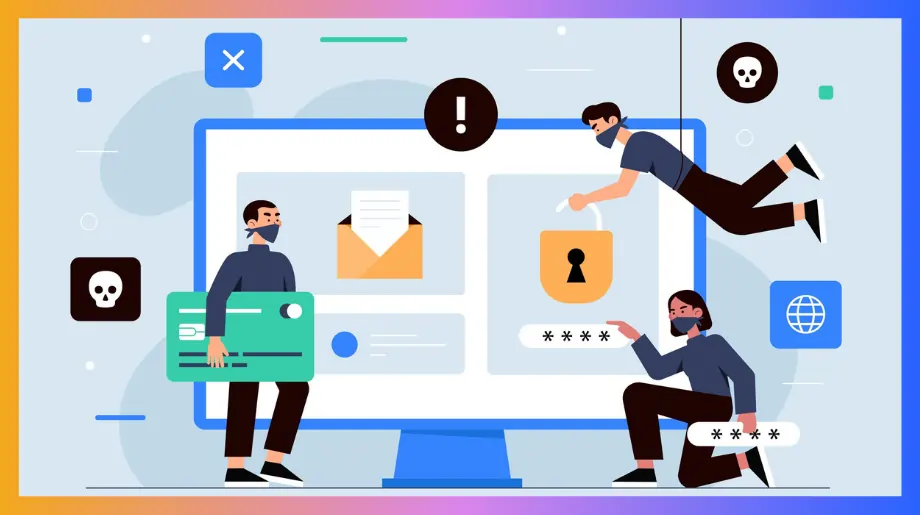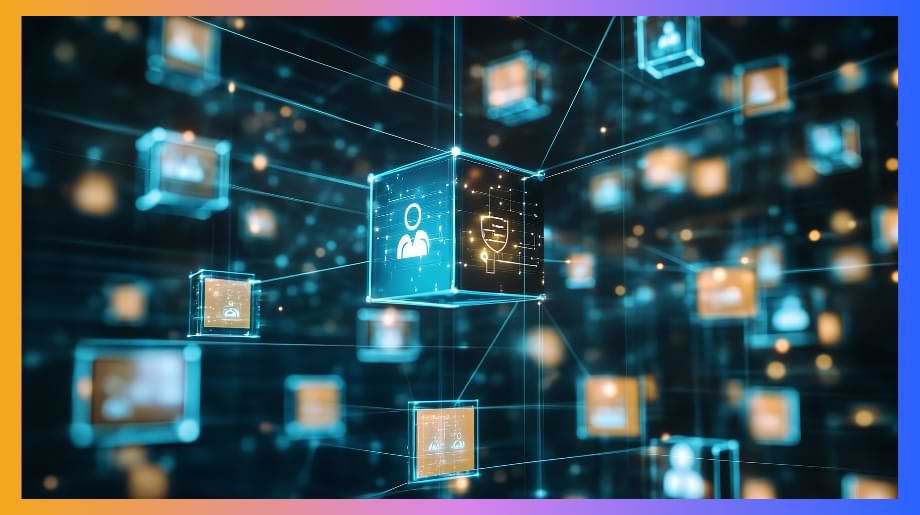Despite the size of your business, if you want to avoid legal oversight, have better protection from brute force attacks and make sure that you clients have the best possible UX - CIAM definitely can get you there - and here’s how.
What Does CIAM Usage Look Like in SaaS Companies?
For Saas Companies, using CIAM typically requires that it have a multi-tenant CIAM architecture that can be scaled easily. This means the CIAM platform the SaaS company uses needs to be able to handle potentially millions of users from different geographic regions with ease.
Aside from what it does is make the onboarding and registration process a lot easier for SaaS companies - it does it through gradual information requests and the usage of social logins for registration (like Facebook and Google).
But Consumer IAM unlike Enterpise IAM needs to also priorotize ease of use, data transparency and make sure that data collected from users complies with international data and privacy laws. To deal with SSO frameworks, consent agreement forms and data anonimization are tools that a reliable CIAM tool helps to meet these requirements.
What Are Some SaaS Companies that Use CIAM Features to Boost User Experience and Security?
1. Databricks
SaaS companies like Databricks use CIAM features to enhance both user experience and security. By using Single Sign-On (SSO) capabilities, Databricks makes that users can access their platform without the need for multiple logins.
This is improved additionally with risk-based authentication. This allows the system to dynamically adjust security measures based on user behavior and session context - avoiding the one size fits all approach in security.
Also, Databricks uses multi-factor authentication (MFA) as a safeguard, securing sensitive data while maintaining usability.
With CIAM, this SaaS company personalizes user interactions based on behavioral analytics, providing unique experiences. Importantly, all of these features are used with full compliance to privacy and data protection regulations.
2. Splunk
Splunk a SaaS company that deak with data analytics solutions, uses Customer Identity and Access Management (CIAM) to improve both user experience and security. By adding CIAM into its platform, Splunk improves the user journey across its applications.
In addition to streamlining authentication, Splunk uses CIAM to improve security with multi-factor authentication (MFA). Aside form this, it also monitors for unauthorized access, and anomaly detection to identify and deal with risks in real-time. This way, the security in place prevents potential breaches and builds user trust.
Moreover, Splunk’s CIAM system supports compliance with privacy specific regulations. To name one GDPR! This helps makes sure that user data is handled securely while there is also transparency and control to the end users.
3. ADP
ADP is Human resource management SaaS company that make use of Customer Identity and Access Management (CIAM) features. And like many of the platforms on this list, it does this to improve both user experience and security.
Additionally, ADP uses multi-factor authentication (MFA) to add security, making sure that only authorized users can access sensitive information. The platform also has self-service account management, letting users update personal information and do reset passwords without assistance improving efficiency and user satisfaction.
By using Single Sign-On (SSO) capabilities, ADP allows users to access multiple services with a single set of credentials, streamlining the login process and reducing user difficulty.
These CIAM features are designed to comply with data privacy regulations, making sure that user data is handled securely and in accordance with legal requirements.
4. Asana
Asana, a leading project management SaaS platform, uses several CIAM features to enhance both security and user experience. Their reliable security framework includes Single Sign-On (SSO) and Multi-Factor Authentication (MFA) to make sure there is secure user access, with role-based permissions and customized data sharing for enterprise-level control.
Asana’s admin console allows granular user management, with permissions set to different roles, from super admins to guests. Also, Asana prioritizes data security through encryption, a secure cloud infrastructure, and compliance with global standards like GDPR and SOC 2.
These features help improve user onboarding, protect sensitive data, and deliver a smooth and, secure user experience.
5. Notion
Notion, like many SaaS companies, uses Customer Identity and Access Management (CIAM) to enhance both user experience and security. By using CIAM, Notion simplifies user authentication, making sure there is a straightforward sign-on experience.
This is achieved through features like single sign-on (SSO) and social logins, allowing users to quickly access their accounts without the need for multiple credentials. Additionally, Notion prioritizes data security with multi-factor authentication (MFA) and adaptive risk-based authentication This prevents unauthorized access while lowering user difficulties.
Moreover, CIAM allows Notion to personalize user interactions, creating unique experiences based on behavior and preferences. These types of software make sure that users are always in control of their personal data, building trust through transparent privacy practices compliant with regulations like GDPR.
6. Meta
Meta, for example, uses CIAM for better user authentication across platforms with Single Sign-On (SSO), making sure users only need to log in once for access to multiple services.
This improves the user experience by reducing time during sign-up and authentication, while improving security through adaptive authentication methods like biometrics and risk-based authentication. Additionally, frameworks like FIDO2 provide Meta’s users with passwordless login, bolstering security without sacrificing convenience
Furthermore, CIAM solutions help companies to enforce multi-factor authentication (MFA) for added security, safeguard user data through compliance with privacy laws (GDPR, CCPA), and simplify account recovery through automated processes like SMS and email OTPs.
This way, you make sure that there’s both a user-friendly experience and reliable data protection, crucial for building trust in digital service.
7. Adobe
Adobe uses CIAM to imrpove both user experience and security, focusing on better, secure access across its diverse platforms. By using Single Sign-On (SSO) and risk-based authentication, Adobe makes sure that users can access multiple services without the need for repeated logins, improving convenience.
Their CIAM systems use advanced multifactor authentication (MFA) and fraud detection mechanisms, safeguarding customer data from unauthorized access. Additionally, Adobe personalizes user experiences based on behaviors and preferences, making sure users engage with the platform more effectively.
Adobe also emphasizes compliance with privacy laws like GDPR, maintaining reliable data governance practices to protect sensitive information.
8. Google
Google uses CIAM solutions to enhance both user experience and security by using advanced features that make authentication better yet reliable.
Their platform provides secure, easy access to services through technologies like Single Sign-On (SSO) and multi-factor authentication (MFA). This not only simplifies login but helps data protection by using sophisticated security protocols like biometric verification and adaptive authentication.
Moreover, Google uses lifecycle management capabilities to automate user provisioning and deprovisioning, streamlining the user experience. This centralization of identity management allows for a cohesive experience across platforms while maintaining high levels of security.
These solutions also keep in line with compliance for data protection laws like GDPR, helping users have better control over their data.
9. Microsoft
Microsoft uses CIAM features to enhance both user experience and security through its Microsoft Entra platform. This system allows better sign-up and sign-in processes, where businesses can incorporate various authentication methods, such as email, social logins (like Google or Facebook), and multifactor authentication (MFA).
Through the creation of customized user flows, businesses can define data collection steps, making sure that the necessary attributes are gathered efficiently during registration.
Additionally, Microsoft’s CIAM tool allows for adaptive risk-based authentication, which adjusts security measures based on the user's behavior. This flexibility is essential for safeguarding against unauthorized access while maintaining a smooth user experience.
Moreover, businesses can personalize interactions with users based on real-time behavioral analytics, enhancing both engagement and security.
Why Choose Infisign as Your CIAM Software?
When it to improving security, sign-ups and reducing fraud - CIAM is definitely the answer. It is widely used by SaaS companies, and it’s an essential part of any platform that take data compliance laws seriously. Try UniFed CIAM today!





















